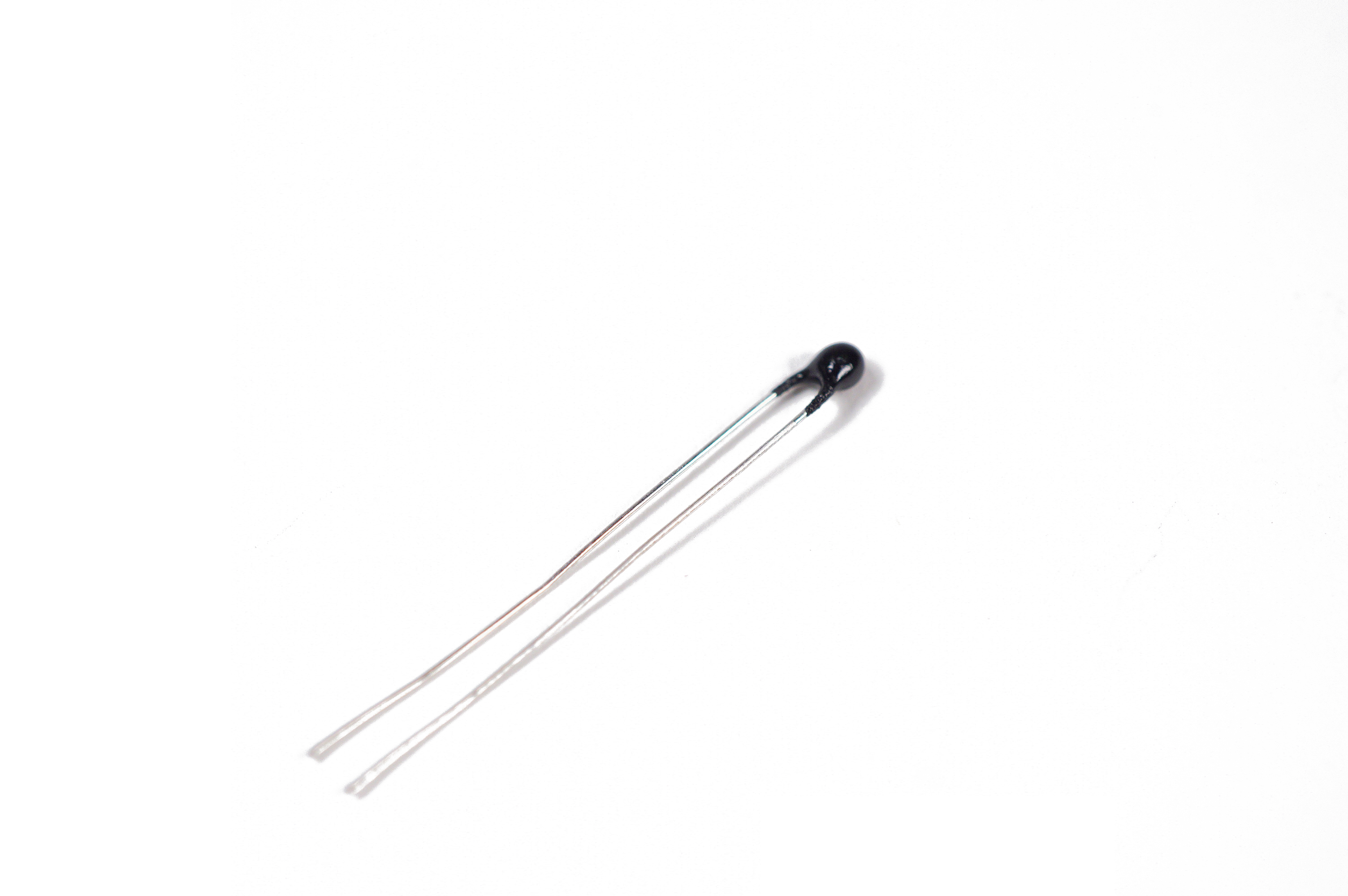Thermistor
Changes its electrical resistance based on its temperature: used as a thermometer.

Thermistors are variable resistors that change their resistance with temperature. They are classified by the way their resistance responds to temperature changes. In Negative Temperature Coefficient (NTC) thermistors, resistance decreases with an increase in temperature. In Positive Temperature Coefficient (PTC) thermistors, resistance increases with an increase in temperature.
NTC thermistors are the most common and are made from a semiconducting material (such as a metal oxide or ceramic) that’s been heated and compressed to form a temperature sensitive conducting material. (Adapted from CircuitBasics)
/*
https://computers.tutsplus.com/tutorials/how-to-read-temperatures-with-arduino--mac-53714
*/
#include <math.h> //loads the more advanced math functions
void setup() { //This function gets called when the Arduino starts
Serial.begin(115200); //This code sets up the Serial port at 115200 baud rate
}
double Thermister(int RawADC) { //Function to perform the fancy math of the Steinhart-Hart equation
double Temp;
Temp = log(((10240000/RawADC) - 10000));
Temp = 1 / (0.001129148 + (0.000234125 + (0.0000000876741 * Temp * Temp ))* Temp );
Temp = Temp - 273.15; // Convert Kelvin to Celsius
Temp = (Temp * 9.0)/ 5.0 + 32.0; // Celsius to Fahrenheit - comment out this line if you need Celsius
return Temp;
}
void loop() { //This function loops while the arduino is powered
int val; //Create an integer variable
double temp; //Variable to hold a temperature value
val=analogRead(0); //Read the analog port 0 and store the value in val
temp=Thermister(val); //Runs the fancy math on the raw analog value
Serial.println(temp); //Print the value to the serial port
delay(1000); //Wait one second before we do it again
}
https://learn.adafruit.com/thermistor/using-a-thermistor